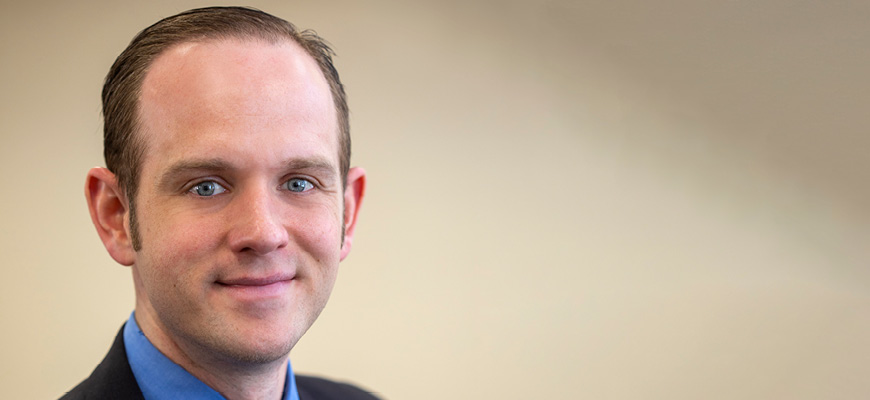
Formula for success
Garnet Apple award-winning professor Morgan Stefik sets chemistry to music
Posted on: December 14, 2022; Updated on: December 14, 2022
By Rebekah Friedman, rebekahb@mailbox.sc.edu
While listening to a podcast about advertising, Morgan Stefik was struck with an idea. Companies often use short jingles to make their brands stick with potential customers. Why not apply that concept in his classes?
Stefik, an associate professor in the chemistry and biochemistry department, enlisted the help of a band to explain basic chemistry principles across the spectrum of musical genres. By fall 2021, he had a series of recordings covering everything from Schrodinger’s wave to the formula for molarity. The songs were catchy, and some — like the somber country ballad about effective nuclear charges — were downright riveting. But most importantly, they were easy to remember.
“Even my 6-year-old son can now tell you that ‘molarity is moles per liter,’” Stefik says.
Stefik jumps at the chance to improve student performance. It’s why he asked to teach the department’s largest course, General Chemistry 111, when he first joined the university — and it’s why he continues teaching the intro class nine years later.
The point is for them to get used to engaging with challenging material and work through many mistakes in class as a team that keeps growing together.
Morgan Stefik
“That class serves the most people, and it's material I find quite engaging, so I go in there with my energy and try to convey that over to the students,” he says. “It's also one that a lot of folks struggle with. It's one that USC calls a ‘traditionally difficult’ course with a 20 percent D/F rate. So, that's been a nice thing to put my target on and just try to chip away at and see how high I can get the success rate.”
Over the years, he’s honed his approach. Demonstrations and videos can get the wheels turning, but the real secret to inspiring progress, he’s discovered, is letting students make mistakes. When he rolls out the cart to demonstrate a chemical reaction, he asks the class to predict what will happen. What they don’t know is that he’s intentionally made it challenging.
“That’s actually when learning occurs, when you realize a flaw and there’s no penalty,” he says. “It’s not as though they’re losing anything. But then when they suddenly see it go a different way and then try to explain it back to me, I think that’s when they really are developing and growing.”
Even his quizzes are designed to be challenging. It’s not as scary as it sounds — students only need one correct answer to get full credit.
“The point is for them to get used to engaging with challenging material and work through many mistakes in class as a team that keeps growing together,” Stefik says.
Challenge is one part of the formula for success. Feedback is another. Stefik has developed a system for sending automated “nudges” to students. Throughout the semester, they receive tailored messages that use digital analytics to show how their homework completion rate compares to the rest of the class. Research has shown it can change their behavior.
“Anything I can get my fingers on to persuade them to put more effort in, I try to implement in some way,” he says.
Stefik also spends the beginning of the semester discussing study habits and time management. He peppers in research about what does and doesn’t improve academic performance with the hope that his students will see their true potential.
“On Day One, I tell the class they all have what it takes to succeed,” Stefik says. “They've already passed the entrance exams, and they've done everything they needed. The university and I believe they have what it takes. Now it's just a question of time. And some people need more time and some less, but all of them are fully qualified to get there.”